Coloured culms
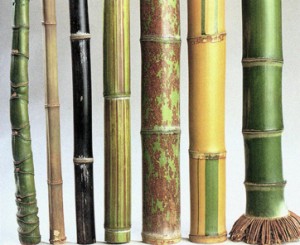
A bamboo stand is a lovely sight, with its undulating stems and evergreen leaves.
The stand's general appearance and health depend on the network of underground rhizomes.
The main stem is known as the culm or cane.
It is divided into sections: an alternating series of nodes and usually hollow internodes.
The height, diameter and appearance of the culm vary with the species.
It may be green, gold, green spotted with purple, yellow striped with green, or even black.
Each internode on the culm is wrapped in a protective sheath.
This membrane surrounds the young shoot even before it emerges from the soil.
Once the internode has finished growing, the sheath dries up and eventually falls off.
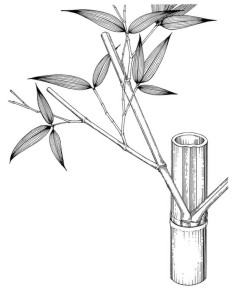
The branches develop at the nodes on the culm and then divide to form leaves.
The number of branches growing from each node helps to identify the genera.
For instance, Phyllostachys bamboos always have two branches per node.
The lance-shaped leaves do not appear until after the culm has finished growing.
They vary in length from a few centimetres to about 30 centimetres.
Because the leaves do not drop off in the fall, bamboos stay green all winter long.
The tiny flowers form small spikes.
As in grains, the seeds form only after pollination.
In some instances the plant may flower so abundantly that it is exhausted and dies.
Bamboos flower in cycles that may last many years; the process is not yet understood by botanists.
A vast underground network
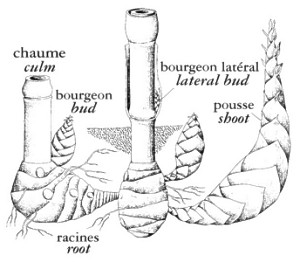
The rhizomes bear regularly spaced nodes with buds.
As they grow, these buds may produce either new rhizomes or aerial stems known as culms.
Bamboos may be identified by their type of rhizome.
In general, bamboos from tropical regions are the clumping type, i.e. they grow in tight clumps, while those from temperate regions have long, creeping rhizomes.
The roots are small in diameter and are used by the plant for absorbing water and nutrients.
They emerge from the rhizomes at the nodes.
Another type of roots that forms at the base of the culms serves to anchor the plant.
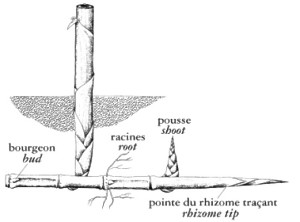
Creeping bamboos have long rhizomes that extend outward just under the surface. Their roots are much smaller and grow from the nodes on the rhizomes as well as at the base of the culms.
|
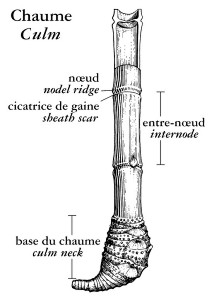
The main stem is known as the culm or cane. It is divided into sections: an alternating series of nodes and usually hollow internodes. |
| 



